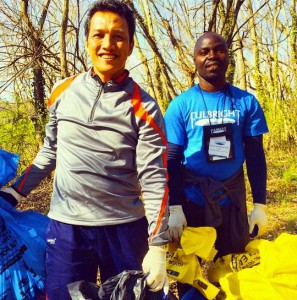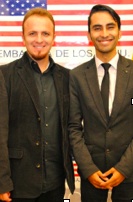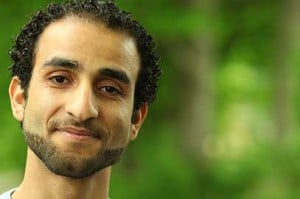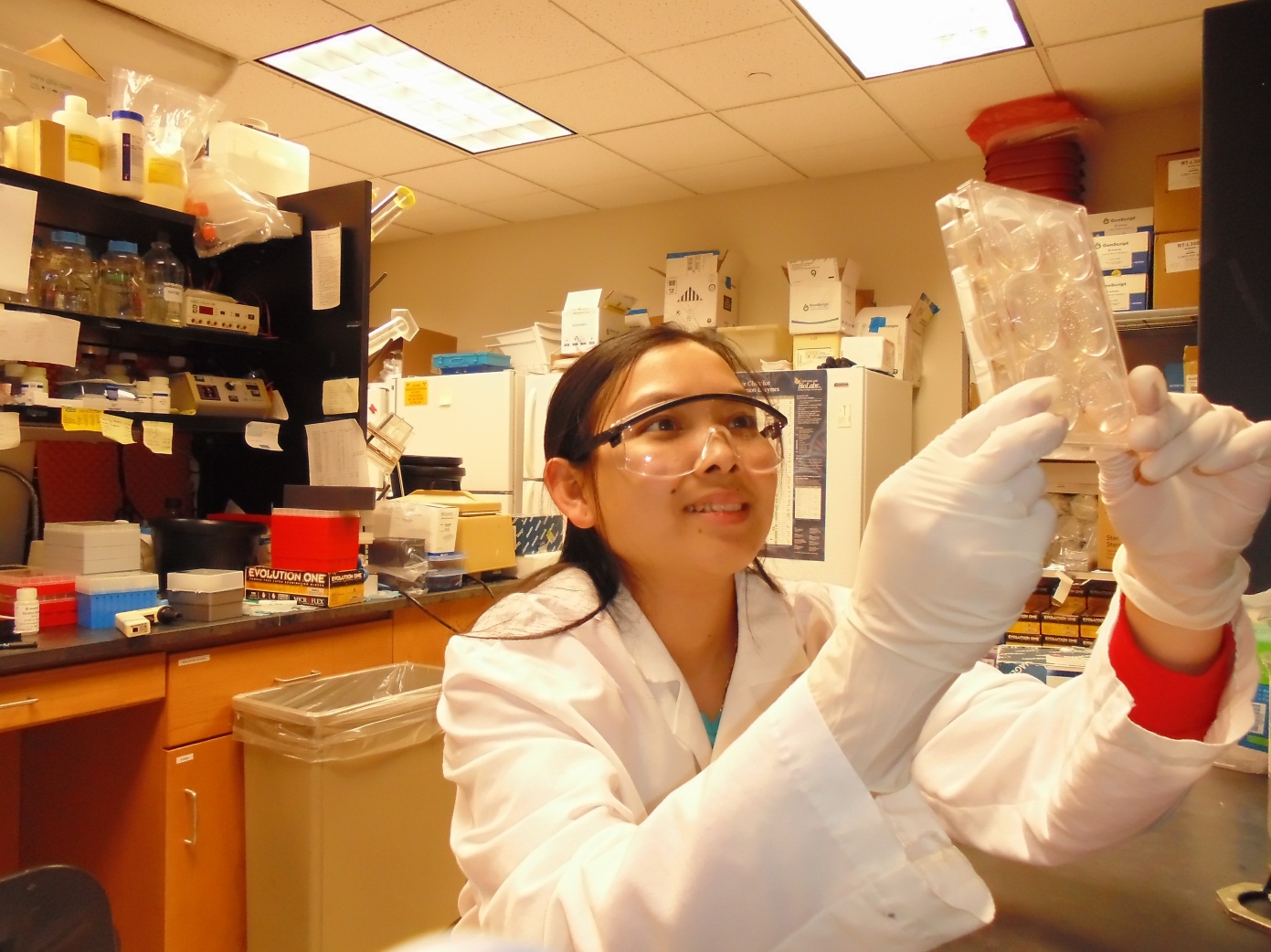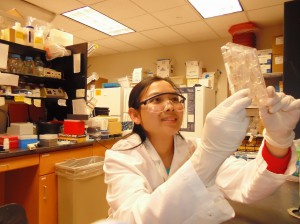
Seanghuoy Ho, 2012-2014, Cambodia examining antibacterial compounds’ efficacy against the bacterial community known as “biofilm” in the laboratory at the Waksman Institute of Microbiology, Rutgers, the State University of New Jersey
When I was a little girl, I once watched a science program on TV in which I saw people wearing long white coats and goggles, holding long, round tubes. The tubes contained cloudy solutions and the people were viewing these solutions under machines called microscopes. I learned from that TV show that those solutions contained bacteria and that they were living creatures. Bacteria come in different shapes and colors, and need food, oxygen and specific temperatures in order to survive. As a kid, I was excited to learn more about these tiny creatures, even though at that time, I had no clue as to why people would want to study them. I dreamed about becoming a scientist one day and conducting research on these wonderful, tiny living things.
Now, thanks to a Fulbright Foreign Student grant, I am a master’s degree student in microbiology at Rutgers, the State University of New Jersey. Since my childhood, I’ve learned a great deal about microbes, specifically bacteria. I realize that I mostly saw bacteria on TV when they caused an outbreak. The majority of bacteria, however, are harmless and even beneficial to human beings. Antibiotics, chemical compounds produced by particular bacteria and used to treat many diseases, are one typical example of their benefits.
Continue Reading
